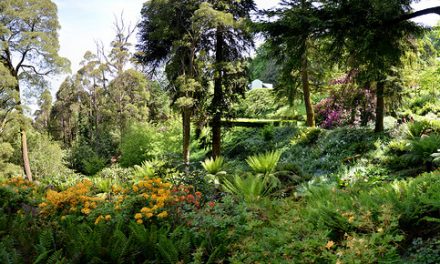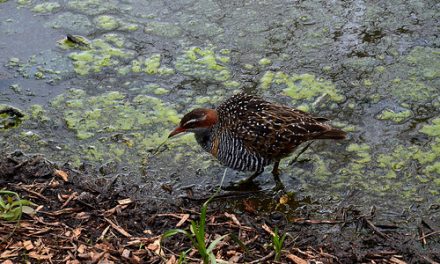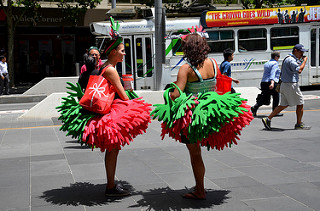In 2005, The Age commissioned Tract Consultants and ACIL Tasman to conduct a study called Liveable Melbourne to rank Melbourne suburbs according to their liveability. The assessments are based on 14 indicators which include crime levels, CBD proximity, coast proximity, train stations proximity, tram line density, bus stop density, traffic congestion, school proximity, shopping facilities, cafes and restaurants, tree density, size of local cultural sector and topographical variation. Each suburb is given a score of 0 to 5 (from poorest to best performing) for each of the 14 indicators. Click here to read the methodology used.
This study which covers 314 suburbs, is updated in 2011 by Tract Consultants and Deloitte Access Economics for The Melbourne Magazine and The Age. Click here to view the full rankings. The 2005 data is available here.
South Yarra once again topped the chart, having achieved a total score of 51 out of a possible 70 maximum, albeit 2 points lower than its 2005 score. The least liveable suburb is Hallam, southeast of Dandenong, which obtained a total score of 13. We do not know whether Hallam was at the bottom of the rung in 2005 since the 2005 survey only revealed the ranking of the top 150 suburbs.
An article in The Age gave the author’s experience after he had visited South Yarra and Hallam, in an attempt to find out how close to reality the top and bottom rankings are. Apparently, he had encountered difficulties getting people to talk to in South Yarra and had discovered the beautiful people in Hallam. On income measures alone, South Yarra and Hallam actually do not differ that dramatically. According to the 2006 census, 16% of Hallam households have annual income of more than $94,000 compared to 34.9% of South Yarra households while 24% of Hallam households live on less than $30,000 a year, compared to 21.3% of South Yarra households.
This study is not the only effort to compare the liveability between Melbourne suburbs. There are at least 3 other similiar attempts by 9msn, realestate.com and Walk Score. The first two depend on user ratings while Walk Score, a company established in 2007, computes the Walkability Index for any address in Australia, Canada, United States and New Zealand. Let us see what are the scores churned out by these 3 sites for South Yarra and Hallam. You can click on the score to go to the reference page.
| Rating Site | South Yarra | Hallam |
| Liveable Melbourne 2011 Justifications (14 indicators) | 51 | 13 |
| 9msn (maybe less reliable as it only has 3 indicators, including affordability) |
5.9 | 8.7 |
| realestate.com ranking list – ranks Highett first, followed by Somers, Williamstown, Bonbeach, … |
81.85 (Ranked 191th) |
83.12 |
| Walkability Index (only considers proximity to amenities) | 100 | 63 |
I am surprised by the numerous positive comments on the 9msn site for Hallam, which run for 5 pages and include:
| Having lived in many states and suburbs I find Hallam to be a little green haven away from the city rush. Great amenities it is a little gem unknown to a lot of Melbournians.
A fantastic place to live with a real sense of community. Great services and facilities for families. Loads of playgrounds, parks, great kindergartens and schools. Lots of trees, close enough to the city and country alike. Moving to Hallam is the best thing I’ve ever done. Hallam is always active, there is never a lack of culture and all year round there is always things to see and do. I think Hallam is one of the best area is fantastic close to everything and major freeways fantastic shopping center, I am telling this cos I been around and if I rate Hallm it will be 9 out of 10. good not many know about this secret place. |
Now, Hallam has made it big on the media, though not in the way as desired by its residents.
The ranking of Footscray at 37th place, higher than Canterbury (48), Middle Park (61) and Malvern East (62), has in particular led many people to question the validity of this survey. Footscray is undoubtedly close to the City and has many shopping amenities. However, it does have a notorious reputation in terms of crime levels, disorderly appearance and drug use, where more than 40,000 needles are exchanged every year and sniffer dogs patrol the train station (Ref 1). We often shop for asian groceries there and my wife has repetitively said she would never consider living there, despite the convenience of stocking fresh food supplies.
West Footscray is ranked 55th. I used to drive along Eleanor Street (highlighted in this article) to bring my wife to the obstetrician’s clinic opposite Western Hospital. Everytime, I could not help feeling suffocated by the dense housing, small land lots, narrow streets, almost non-existing nature strips and lack of trees and open spaces. This feeling also applies to many other streets in West Footscray. The only things I enjoyed are the roses and germanium that were in bloom in front of many weatherboard houses.
Altona is ranked a pathetic 184th in this Liveable Melbourne study, behind Braybrook (95th), South Kingsville (96th), Seaholme (116th), Maidstone (153th), Noble Park (161th) and Seabrook (163th).
Seaholme is a suburb enclosed within the bigger suburb of Altona. Both have the same postcode 3018 and I would say share the same characteristics and environmental factors. I believe many residents of Seaholme identify themselves to be part of Altona and treat Pier Street as their main street. It puzzles me why Altona and Seaholme are separated by 72th places in ranking. Strictly speaking, Seaholme is closer to Mobil Refinery than Altona, has one train station (Seaholme) compared to two in Altona (Altona and Westona), has one school (Seaholme Primary) compared to 5 in Altona (3 primary and 2 secondary schools) and has much less shopping facilities. Altona has the Pier Street Shopping Precinct, Harrington Square and shops along Somers Parade, Ford Street, Upton Street and Civic Parade near the Millers Street roundabout. In reality, Altona and Seaholme residents do not distinguish between themselves, preferring to say they collectively have 3 train stations, 6 schools and so on.
The higher ranking of Seabrook above Altona is an enigma. The Age has this to say about Seabrook: “Improved open space and provision of cafes and restaurants has helped outer south-western Seabrook rise 68 places since the 2005 Liveable Melbourne survey, although the greatest change was an increase in proximity to bus lines. It scores well on congestion, open space and proximity to coast.”
Seabrook is further away from Melbourne CBD, being located west of Altona Meadows. The only way for it to access the outside world is through Point Cook Road, a mostly 2-lanes road (one lane per direction), which is very congested during peak hours as this is the only channel of conduit for many residents of Point Cook and Altona Meadows. The nearest train station is Aircraft accessible via the flyover across M1 but most people prefer to drive further away to the Zone 1 Laverton station. A major complaint among residents in this area is the infrequent and inadequate bus services. Seabrook residents will have to drive to Altona to access the beach. I am wondering when did poorly-serviced Seabrook start having so many amenities, restaurants, schools and open spaces such that it outperforms Altona or even Altona Meadows and Point Cook which it borders with.
The Age has this comment on Braybrook: “This maligned inner-western suburb has limited open space and tree cover, plus high crime, but these are offset by low congestion, great proximity to schools, shopping facilities, cafes and restaurants. Braybrook is also (relatively) close to the city and the beach.” I would not desire to live in a place with high crime rate, limited open space and tree cover. Braybrook is no way near the beach. You will need to drive at least 21 minutes to reach the nearest beach at Altona or 23 minutes to Williamstown Beach.
The higher ranking of Noble Park than Altona came in as a surprise to me because I am aware that it has been placed in the same basket as Dandenong, Broadmeadows, Footscray and Frankston, which people have traditionally avoided due to their affliction with crime problems. It is also pretty far away from the Melbourne CBD, requiring a long commuting distance either by car or train.
| Suburbs | Liveable Melbourne 2011 Score (Rank) |
Walkability Index | Realestate.com Score (Rank) |
9msn Score |
| Altona | 29 (184th) | 85 | 86.86 (117th) | 8.1 |
| Seaholme | 35 (116th) | 70 | 85.48 | 7.4 |
| Footscray | 45 (37th) | 90 | 84.67 (144th) | 7.1 |
| West Footscray | 42 (55th) | 90 | 63.17 (288th) | 5.8 |
| Braybrook | 38 (95th) | 65 | 83.79 | 7.3 |
| South Kingsville | 39 (96th) | 60 | 88.89 | 6.4 |
| Maidstone | 35 (153th) | 72 | 94.17 (17th) | 8.7 |
| Noble Park | 32 (161th) | 63 | 83.05 (167th) | 7.0 |
| Seabrook | 32 (163th) | 45 | 93.95 (19th) | No rating yet |
As you can see from the above table, Altona achieves high performance on the Walkability Index and the two user rating sites, which makes it difficult to reconcile with its low ranking on the Liveable Melbourne study.
The 2011 study did not reveal the breakdown of the 14 indicators for each suburb. But the 2005 study did, so it is possible to see how Altona was being assessed for each indicator.
| Indicator | Score (0-5) |
Comment |
|---|---|---|
| Proximity to coastline | 5 | Agree. |
| Proximity to CBD | 3 | Agree. Note that Altona is 13 km from Melbourne CBD. |
| Proximity to train stations | 3 | The train track runs through the centre of Altona, dividing residential Altona into roughly equal northern and southern half, meaning that all parts of Altona have good access to the 3 stations of Seaholme, Altona and Westona. So I will have to disagree with this rating. |
| Tram Line Density | 0 | Agree. But I feel the importance of tram is overstated. I know the tram journey between St Kilda and Melbourne CBD can be frustratingly time-consuming despite their proximity. |
| Bus Stop Density | 1 | Altona is serviced by 3 bus services, including SmartBus 903. I think all western suburbs and perhaps also many eastern suburbs do not have bus services that are sufficiently frequent, reliable, fast, have wide area coverage and good connectivity that will make residents give up their cars and depend solely on public transport. |
| Size of local cultural sector | 1 | Altona has its own Louis Joel Arts & Community Centre (Fine Arts), Altona City Theatre (Performing Arts), Altona Homestead Museum (local history and cultural heritage), annual Beach Festival, street markets, many sports and community clubs as well as public art displays and permanent artwork. I feel that a score of 1 is not justifiable. |
| Proportion of congested roads | 5 | Agree. Unlike other suburbs, Altona does not have throughput traffic. |
| Proximity to schools | 0 | 6 schools (4 primary and 2 secondary schools), of which at least 2 are well-regarded, serve a population of about 10,000-11,000 (all ages). The fact that the Liveable Melbourne study does not consider the reputation of the schools, just the proximity, makes it even more baffling as to why Altona was given a score of 0. |
| Shopping facilities | 4 | This is probably valid when compared to suburbs like South Yarra, Footscray and Box Hill. A good news is Altona will be getting another supermarket in Pier Street North, in addition to Coles in Pier Street South and Foodworks in Harrington Square. |
| Proportion of open space | 5 | Agree – there is abundance of open space, including the Beach foreshore, Cherry Lake Reserve, Altona Coastal Park, Apex Park, Truganina Coastal Parklands, Logan Reserve, Kooringal Golf Course and many reserves. |
| Tree Density | 0 | Definitely will have to disagree with this. I had previously lived in Carnegie. I would say there are no less trees in residential Altona than in Carnegie. If there is scarcity of trees, Altona would not have become a haven for birdlife. |
| Topographical variation | 0 | Agree. I am not convinced that this should be given the same weighting as other indicators. |
| Provision of cafes and restaurants | 0 | I have to disagree with this rating as Altona does have a number of cafes and restaurants at Pier Street and other locations. |
| Crime levels | 1 | The burglary rate for Altona from 2009-2010 is 0.76%, almost half the average rate in Victoria (Ref 2). I feel very safe in Altona and find it difficult to agree with the “1” score. |
Just based on my knowledge of Altona and several other suburbs, I have discovered a range of issues that require explanation and re-analysis. I will not be surprised that such anomalies exist for other suburbs as well.
I believe at least one assumption of the study methodology is problematic and can be improved. It does not make sense to assign equal weighting to all the 14 indicators. For example, topographical variation is certainly not as important as crime level. Although it may be more aesthetically pleasing to have undulating landscape, this does not greatly impact on the liveability of an area. The research team could actually conduct a preliminary survey, say with 500 persons, to ascertain the relative importance that should be attached to each indicator and whether there should be a change in the type and quantity of the indicators.
A very important constituent of a place’s liveability, which is omitted from this study, is its people and communities. Though it is not impossible to devise measurement criteria and methodology, it will require considerable resources and cannot be built upon from existing government data. Nonetheless, the validity of a suburb’s liveability will be compromised in the absence of this indicator. The exclusion of affordability and living expenses from this study is controversial as I believe this is a factor included in the ranking of the world’s most liveable cities. Why wouldn’t we extend this criterion to a city’s suburbs? If I can pay less rent or mortgage interests and buy cheaper groceries in the suburb I choose to live, wouldn’t this raise my quality of living as I have more disposable income to spend on say luxury items, holiday and dining out?
I doubt the research team actually inspects individual suburbs but instead relies solely on armchair analysis of data obtained from other sources. These data may be inaccurate, incomplete, outdated or do not take into account the specific circumstances of each suburb. The deviations of Altona’s assessments from the actual realities could be attributed to Altona being comprised of not only a residential part but a very large industrial part to the north. This industrial part has no school, train stations, few trees and other amenities. If you divide the number of such amenities by the total land area of Altona, you will get a very low amenity density indeed. However, all sensible people know that you should be distinguishing the residential part from the industrial part and not to lump them together. The centroid of Altona will have to be the centroid of solely “residential Altona”, not encompassing its industrial chunk. Otherwise, the measurement of distances to its train stations, schools and other amenities will be highly erroneous.
I would advise that potential home buyers and renters take the results of this study with a pinch of salt and not to completely depend on it to guide their home search. Otherwise, you may write off certain suburbs, such as the lowest-ranking Hallam, which may appeal to you despite what the study suggests. The best way is still to visit the suburb and talk to the local people to have a feel of whether you like the suburb or not. This is precisely what I did in 2007 when I paid a visit to Altona and I have not been disappointed with my decision since then.
Reference
- The list: Melbourne suburbs’ liveability ranking revealed
- Interactive guide to the melbourne Magazine’s Liveability Survey
- The Liveable Melbourne City
- Our liveable city
- Q&A: our liveable city
- Inner west gives leafy east a run in the liveability stakes
- Both ends of the liveability scale: South Yarra and Hallam revealed
- Is this really Melbourne’s least liveable suburb?
- Life in the middle: Moorabbin revealed
- Liveable Melbourne 2005
- The places we call home
- Suburban dreaming
- The judging method





We should be pleased to keep Altona low profile then we don't have to share it with 'outsiders'!
Very intelligent analysis and I agree with your points entirely. You said it yourself, Liveable Melbourne is all armchair analysis under the guise of rigorous research that should be taken with a grain of salt.
Through my exposure to the market research industry (and brief stint in user acceptance testing with a consulting firm) I learned that there is almost always a hidden agenda involved. Measures are biased toward a pre-determined end goal, and very few on the project would personally care enough to be conscientious about the outcome.
Someone like you would be great in a decision-making government role, but it's no surprise you're involved in cutting edge brain research. Your skills are best used there to be honest!
And by the way, I'm Box Hill born and raised but spent a solid 18 months going to Altona and back (for a girlfriend) and was very impressed with its liveability and community.